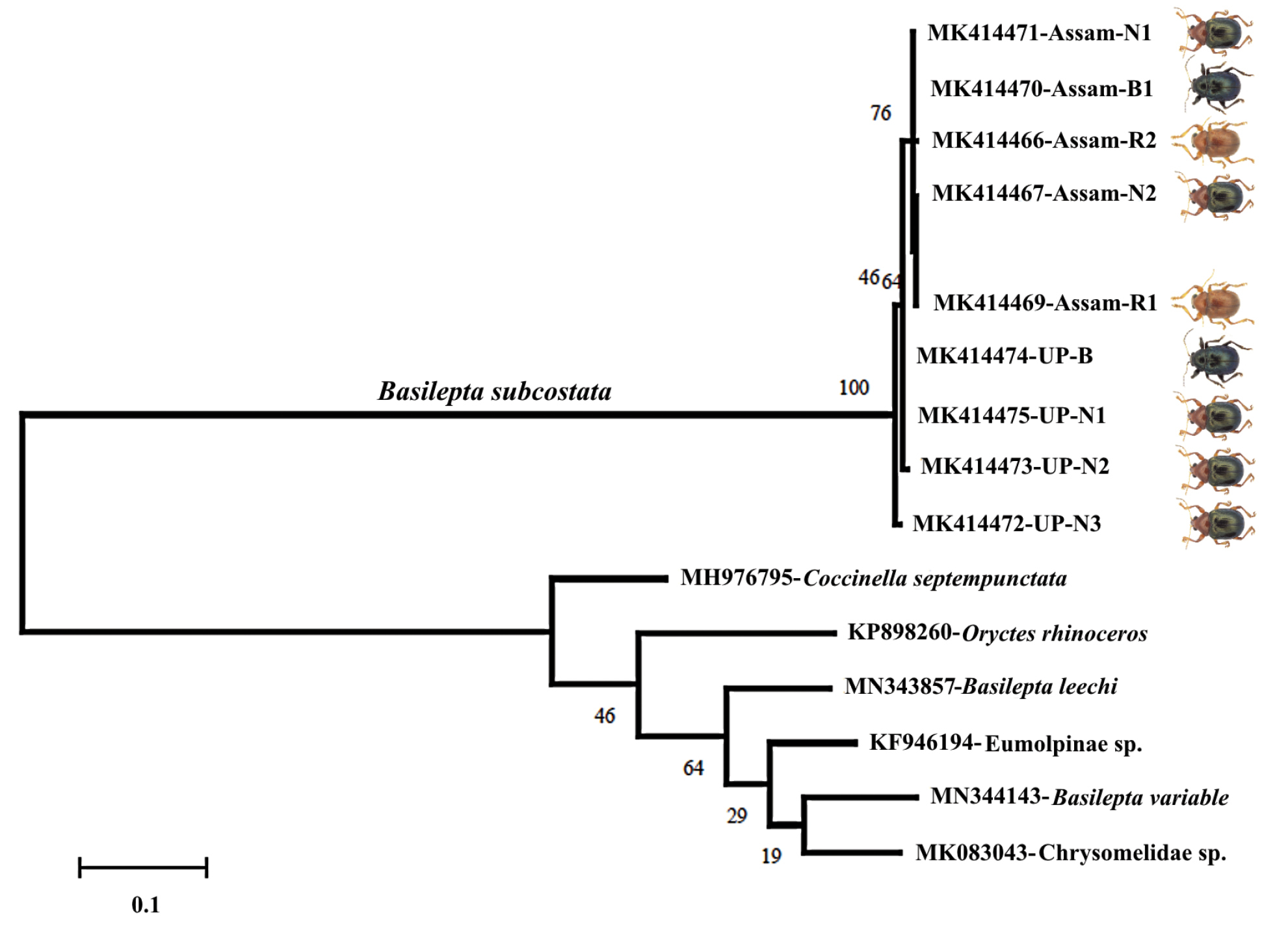
|
||
|
Maximum Likelihood phylogeny of B. subcostata populations from Assam and Uttar Pradesh, India. The evolutionary history was inferred by using the Maximum Likelihood method and Tamura-Nei model. The tree with the highest log likelihood (-3489.32) is shown. The percentage of trees in which the associated taxa clustered together is shown next to the branches. Initial tree(s) for the heuristic search were obtained automatically by applying Neighbor-Join and BioNJ algorithms to a matrix of pairwise distances estimated using the Maximum Composite Likelihood (MCL) approach, and then selecting the topology with superior log likelihood value. The tree is drawn to scale, with branch lengths measured in the number of substitutions per site. This analysis involved 16 nucleotide sequences. Codon positions included were 1st+2nd+3rd+Noncoding. There was a total of 660 positions in the final dataset. Evolutionary analyses were conducted in MEGA X. |